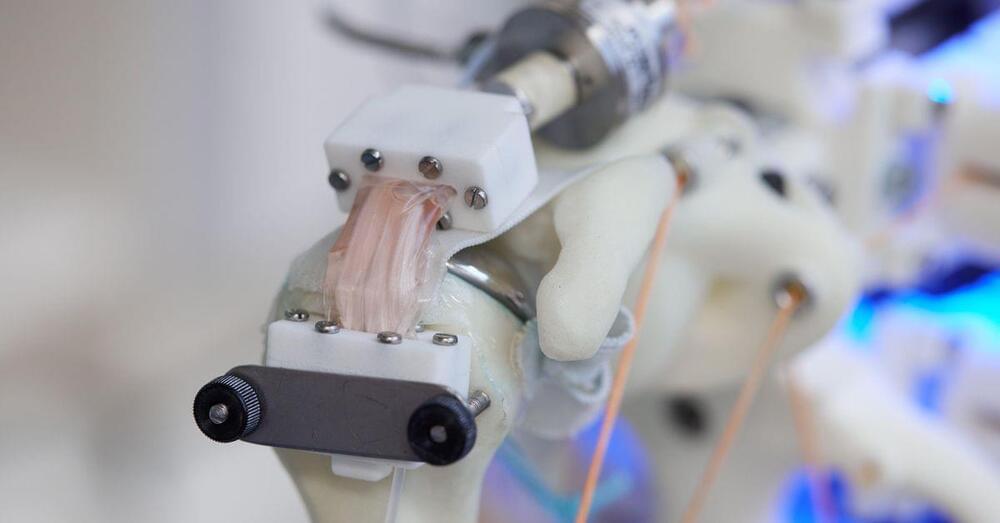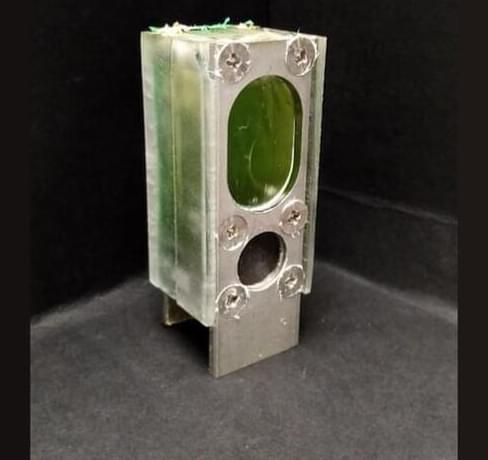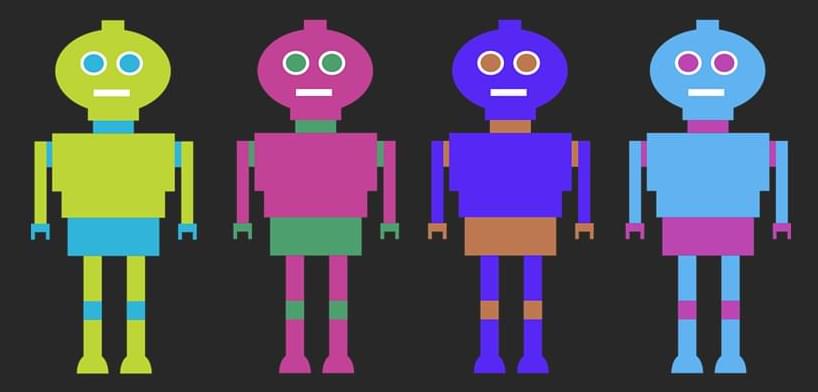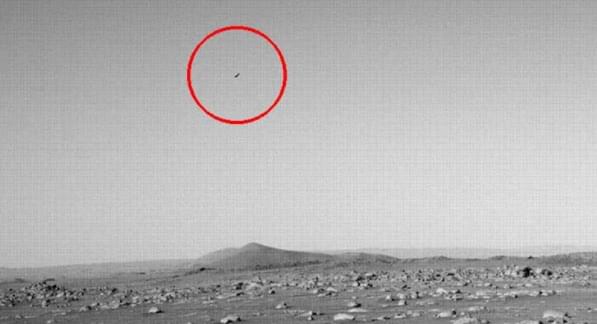Lidar reveals a lost Amazon civilization that flourished from 500 to 1,400 AD (CE).
Where today there is a watery environment, once stood settlements with terraces, walls, and earthen pyramids standing 30 metres high.



If you want to grow human cells, try to approximate a human body.
Scientist have grown human cells on a robot skeleton, hoping that by moving the skeleton they can better approximate the cells’ natural growing environment. The cells certainly grew, but it’s not clear yet if they would be any better for medical treatments.

In addition to being a simple power source built from readily available parts and materials, the system runs day and night (in contrast with solar power). The algae, the team thinks, overproduces food during the day, so it continues to happily munch away, and produce electricity, through the night. Although the paper addresses their findings from just that first six-month period, their algae-powered-computer has now been running continuously for a year (and counting).
It’s a pretty nifty trick, but some scaling is probably in order. The system produces a tiny amount of current. The chip, an Arm Cortex M0+ commonly used in Internet of Things applications, sips just 0.3 microwatts an hour to perform very basic calculations. As The Verge notes, if your average laptop uses around 100 watts an hour, you’d need millions of these algae energy harvesters just to check your email or zone out in a Zoom meeting.
But the researchers aren’t targeting laptops. Rather, they believe future iterations would find a niche application powering the billions or trillions of simple sensors and chips making up the Internet of Things. These might take measurements of local conditions in remote locations, for example, or they might be able to charge a small device.

😃
The United Kingdom has confirmed what everybody who ugly cried during “My Octopus Teacher” already knew: Octopuses are sentient — capable, that is, of perceiving things like pain and pleasure.
The country is adding an amendment to its Animal Welfare Sentience Bill to recognize creatures such as octopus, crabs, squids, and lobsters along with “all other decapod crustaceans and cephalopod molluscs” as sentient creatures, according to a press release from the UK Department for Environment, Food & Rural Affairs. The bill aims to ensure animal sentience is taken into account when developing government policy, and as such could inform debates around animal rights and dietary choices.
“The science is now clear that decapods and cephalopods can feel pain and therefore it is only right they are covered by this vital piece of legislation,” Animal Welfare Minister Lord Zac Goldsmith said in the release.

Volcanic eruptions remind us that the inside of our planet isn’t exactly tranquil, but there’s plenty of completely unknown stuff happening beneath our feet.
ESA’s Swarm satellite mission has detected a completely new type of magnetic wave that sweeps across the outermost part of Earth’s outer core every seven years.
The finding could help us to understand more about Earth’s magnetic field, without which life as we know it could not exist.



Is this true?
The Perseverance rover has been on Mars for two weeks and has now spun its wheels and began its maiden trek over the red planet’s surface. According to new images transmitted to Earth by the one-ton robot on Friday, the voyage was a quick one.
Engineers have worked tirelessly to get the vehicle and its numerous equipment up and operating, including instruments and a robotic arm. Perseverance’s mission is to look for indications of alien life in the Jezero crater, which is located near the equator. This will take roughly 15 kilometers throughout the following Martian year (approximately two Earth years).
Scientists want to gain access to a series of rock formations in the crater that might provide traces of ancient biological activity. According to satellite images, one of them appears to be a delta, a structure consisting of silt and sand pushed up by a river as it reaches a larger body of water. In Jezero’s case, this greater mass was most likely a crater-wide lake that existed billions of years ago. However, Perseverance must first undertake an experiment before they can begin.

The study was led by Ren Yuanzhen, a researcher with the Beijing Institute of Tracking and Telecommunications, under the PLA’s Strategic Support Force. Coauthors included several senior scientists in China’s defense industry.
Ren and his colleagues could not immediately be reached for comment and it is uncertain to what extent their view represents an official stance of the Chinese military or government.
“A combination of soft and hard kill methods should be adopted to make some Starlink satellites lose their functions and destroy the constellation’s operating system,” said the paper, published in the domestic, peer-reviewed journal Modern Defense Technology.